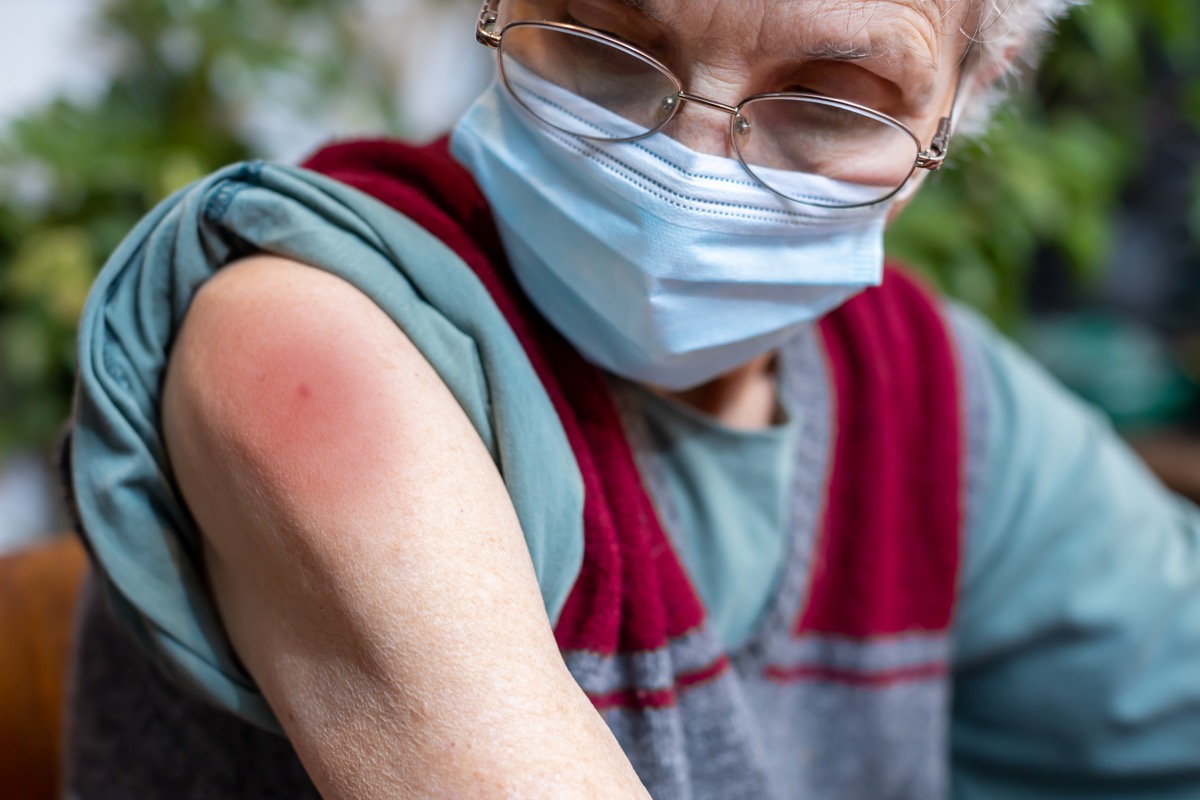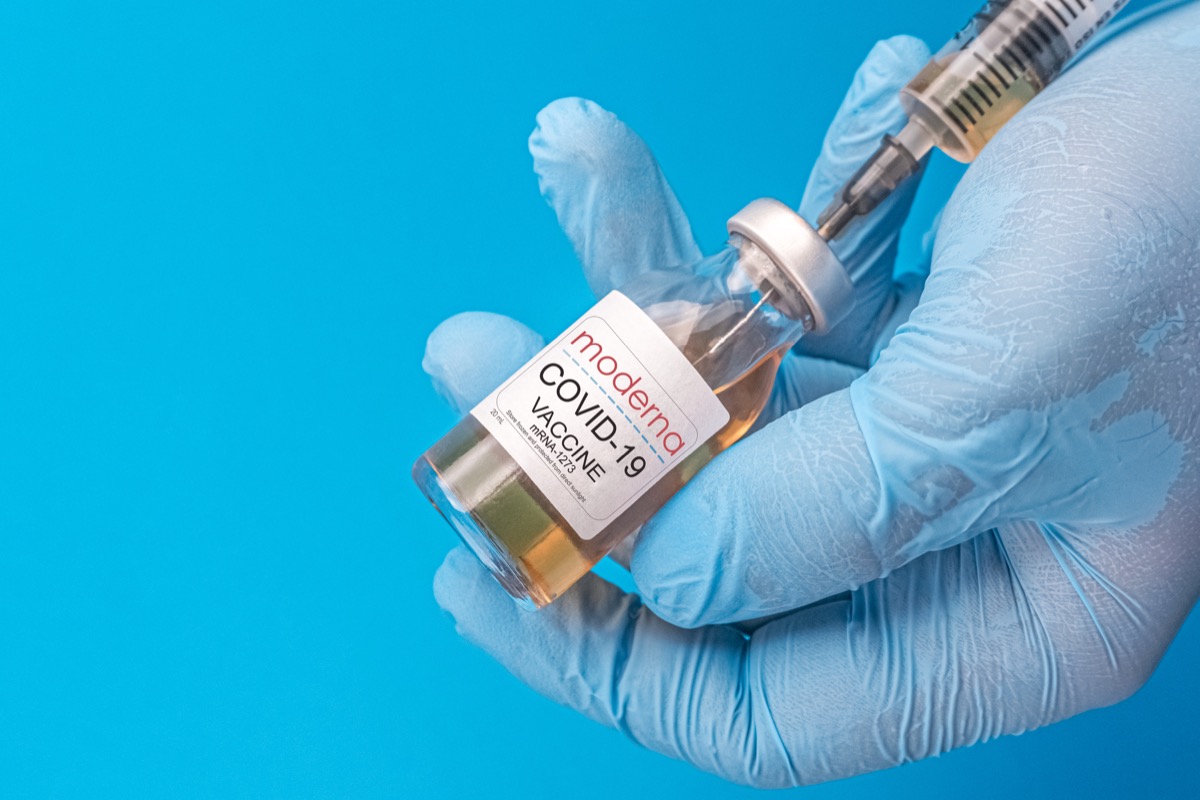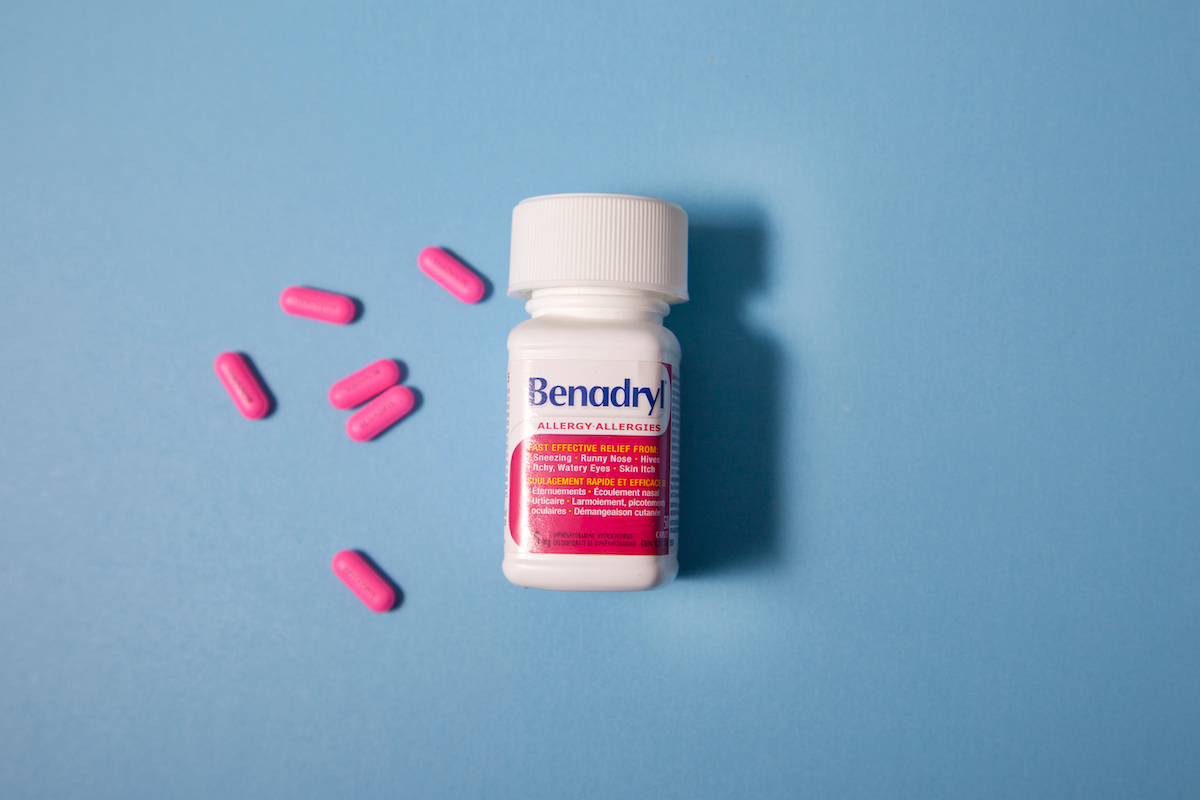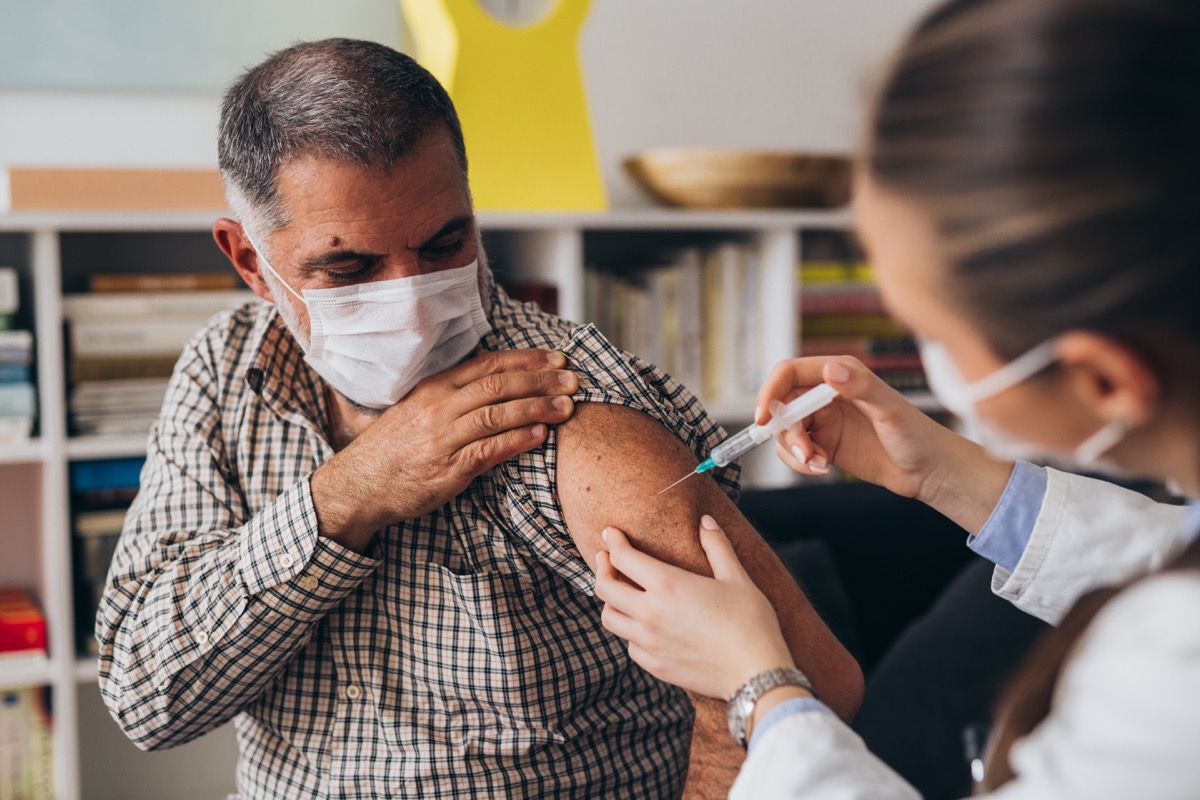Some people have noticed a red, itchy, swollen, or painful rash at their injection site, which can be quite large, the Centers for Disease Control and Prevention (CDC) says. The rashes have been colloquially deemed “COVID arm” and, the CDC says it could even crop up more than a week after you get vaccinated. Charles Webb, MD, an allergist-immunologist in Boise, Idaho, told Idaho 6 News that one thing that’s particularly unique about this vaccine side effect is that it shows up approximately five to seven days after the jab. This “delayed-type hypersensitivity reaction,” as it’s called, also happens with some non-COVID vaccines, like tetanus and pneumococcal shots. And for more up-to-date COVID news, sign up for our daily newsletter. “The COVID arm, basically, this is not an unusual reaction to the vaccine,” Webb told Idaho 6 News. “It just is reflecting that we have a very robust immune response meaning your immune system is recognizing what we injected you with.“ae0fcc31ae342fd3a1346ebb1f342fcb The COVID vaccines, whether from Pfizer, Moderna, or Johnson & Johnson, work by signaling to the body to create antibodies to fight against the virus should you be infected in the future. The CDC explains that two types of “memory” defensive white blood cells, known as B-lymphocytes and T-lymphocytes, are left in the body after the jab and work to fight off the real virus should it enter your immune system. Any side effects you experience are the result of that immune response. So whether it’s a fever, headache, chills, or possibly a rash, consider it proof that your body is building immunity against COVID-19. Most reports of “COVID arm” have been seen in patients who got the Moderna vaccine, as Esther Freeman, MD, a director at Massachusetts General Hospital in Boston, Massachusetts, recently told Dermatology Times. Freeman co-authored a case series published in the New England Journal of Medicine on 12 patients who experienced the reactions. “People were expecting to see local site injection reactions after the vaccines. What’s been surprising is that with Moderna, people are seeing skin reactions on the vaccinated arm appear not within hours or a day of injection, but instead 8 days later,” Freeman told Dermatology Times. “What surprised everyone was this delay in onset.” She did say a handful of individuals who received the Pfizer shot also saw a delayed rash days after their vaccination. And for more on what Moderna patients should expect, check out The One Side Effect That’s Much More Common With Moderna, Data Shows. If you get this COVID vaccine side effect, Webb says to use an antihistamine like Benadryl and if you’re experiencing pain, he suggests Tylenol. “If you’re having other discomforts, cool compresses are very helpful, and then of course topical steroids also help depress the swelling and local redness,” he told Idaho 6 News. One patient named Kimberly Cornmesser told the news outlet that she got “COVID arm” about 48 hours after her second Moderna dose. “It didn’t go away for at least a week. I thought it was a little weird, but I kind of brushed it off until it started to get progressively worse,” she said. Cornmesser said she was “most surprised by the itching,” which she was able to minimize with ice. The CDC does not consider “COVID arm” to be a severe allergic reaction. “An allergic reaction is considered severe when a person needs to be treated with epinephrine or EpiPen© or if they must go to the hospital,” the CDC says. So “COVID arm” shouldn’t cause panic and shouldn’t prevent you from getting your second jab, if your vaccine calls for one. But the CDC does suggest getting vaccinated in the opposite arm for your second dose if you experience the rash after your first. On the other hand, severe allergic reactions, known as anaphylaxis, following the first COVID jab are the reason why you are monitored for 15 minutes after getting vaccinated. But, the CDC notes, this kind of reaction is very rare—and only in these cases should you avoid getting your second shot. And for more on the future of COVID vaccines, check out Moderna CEO Says This Is How Often You’ll Need a COVID Vaccine.




